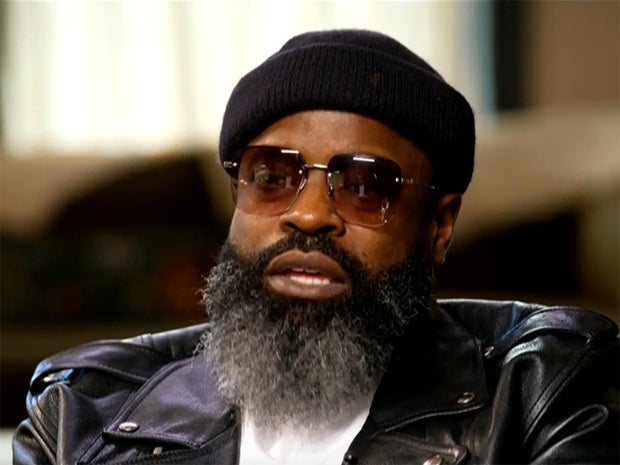Tariq Trotter is best known by his rap name, Black Thought. But before the lead emcee for The Roots made music, he studied art, taking classes at Fleisher Art Memorial in South Philadelphia.
Attending his first school of the arts as a child, Trotter said the environment “was otherworldly for me. It always felt sort of like a sanctuary, a hidden gem.”
In his new memoir, “The Upcycled Self: A Memoir on the Art of Becoming Who We Are,” Trotter writes that art saved his life. “Art, you know, has been my saving grace, my salvation, absolutely,” he said.
One World
Asked whether he discovered anything surprising about himself while writing, Trotter said, “I think just the level of resilience.”
In the very first chapter, “The Fire,” Trotter begins: “I burned down the family home when I was six years old.”
It was an accident; he was playing with a lighter. But Trotter’s mom was forgiving – more forgiving, he suggests, than he was of himself. “Oh, yes, my mother was super-forgiving about the fire,” Trotter said. “There was something lost in the fire that, you know, we would never be able to get back.”
What was lost? “I think a certain, you know, innocence, a certain level of security.”
Young Tariq was swept up in Philly’s new hip-hop culture. “It was huge,” he said. “And in it, I was given a voice, you know. So, I saw myself. I heard myself.”
As a graffiti writer, the city became his canvas. Graffiti, he noted, is “the original art. The original art is writing on the wall, right? It’s carving. It’s writing. It’s like cave painting, and that’s what this is.”
At Philadelphia’s Graffiti Pier, he explained how he typically practiced his art at night, under the cover of darkness.
“We would, you know, press our back against this wall and, like, scale up as high as we can go on this, and then, you know, hop on that thing. There was almost, you know, parkour involved! But, again, stuff that I would never think about attempting now!” he said.
CBS News
Graffiti, he said, “was the utmost form of an expression of myself, of who I was.”
Did the fact that it was public mean something? “It meant everything that it was public,” he said. “It was the beginning of me being able to tell my story.”
Of course, it was illegal. Arrested at age 12, he was sentenced to 150 hours of “scrub time.” He was drafted into the city’s Anti-Graffiti Network, which would become the Mural Arts Program.
Ironically, the graffiti artist now has his own mural, which he said went up about two years ago and “feels awesome.”
“But now, in retrospect, I look at this image and I say, ‘Wow, I’ve lost a little bit of weight since that mural went up.’ So, can I touch it up? Like, can we go up there and, you know, slim it down a little bit?”
CBS News
Trotter credits his mother for encouraging the artist in him. But she became “addicted to street life,” he writes, and was murdered in the crack epidemic of the 1980s. “To lose my mother in the way that I did, at the time that I did, it was my worst nightmare,” he said.
In that moment he came to realize, “You can’t change everyone. You can’t save everyone.”
But art would save him again. He found an unexpected collaborator in Ahmir Thompson, a musician who would later go by the name Questlove. They became like brothers, even though, he notes, they are polar opposites in many ways. But they fascinated each other. “Yeah, absolutely. Well, opposites attract,” he said.
CBS News
He writes in his memoir, out Tuesday, that The Roots evolved into a group “by mutual, silent agreement.” Their big break came with an invitation to play a German music festival, with the offer of a big check. “At that time, yeah, they offered us probably four grand, something like that, which was huge.”
What was he thinking at that moment? “We had made it. Our demo and what would become our first album (1993’s “Organix”) were all related to that first gig.”
As an artist, Trotter has been eternally restless. He writes: “I wonder if that … bottomless hunger is still the hunger of a six-year-old kid desperate to remake the idyllic world he’d burned to the ground.”
Asked whether the hunger ever worries him, he responded, “No, no, the hunger doesn’t worry me, man. It’s all I know.”
And Tariq Trotter says it’s never let him down. “I haven’t failed myself yet,” he said. “Am I always at my best? No, but my worst is the next man’s treasure!”



